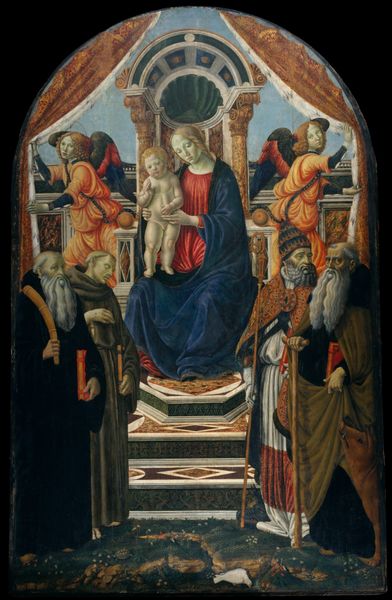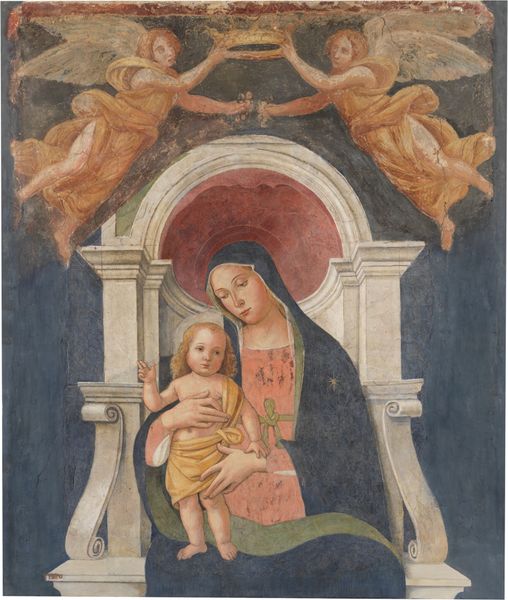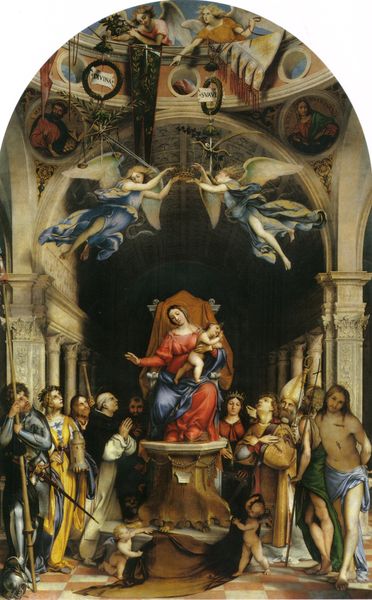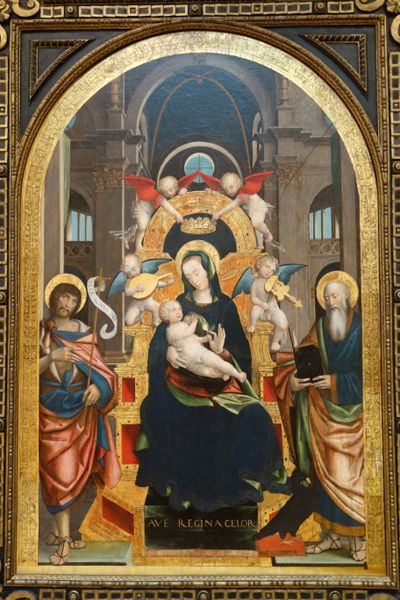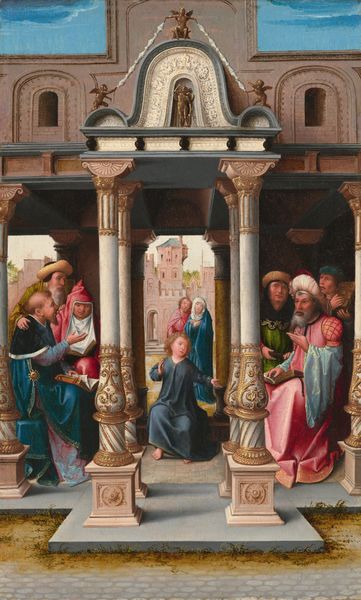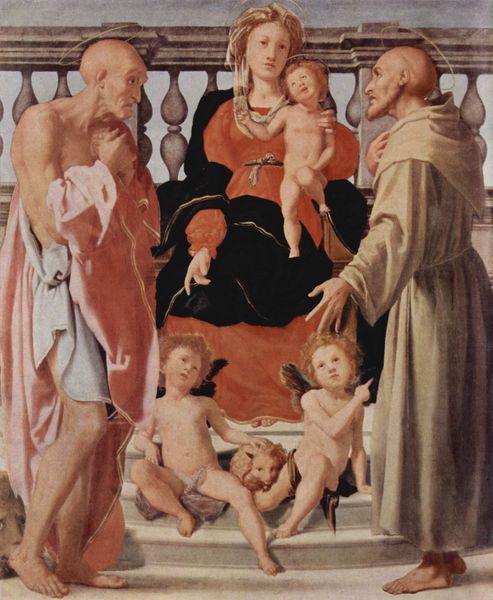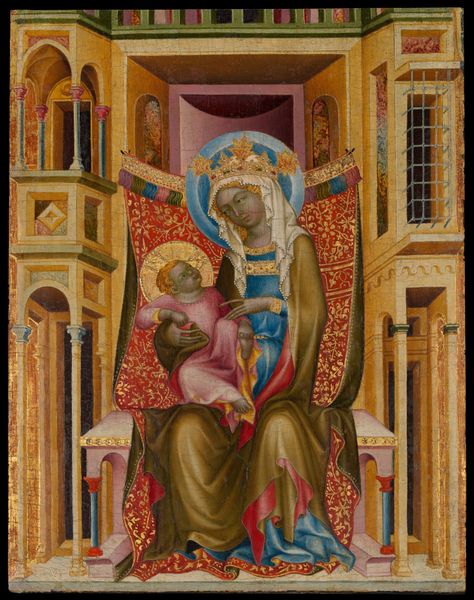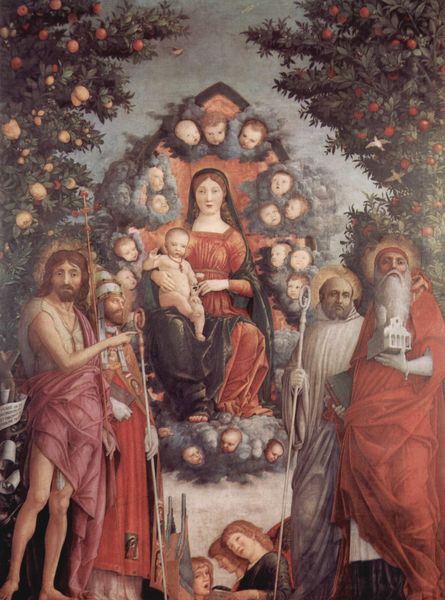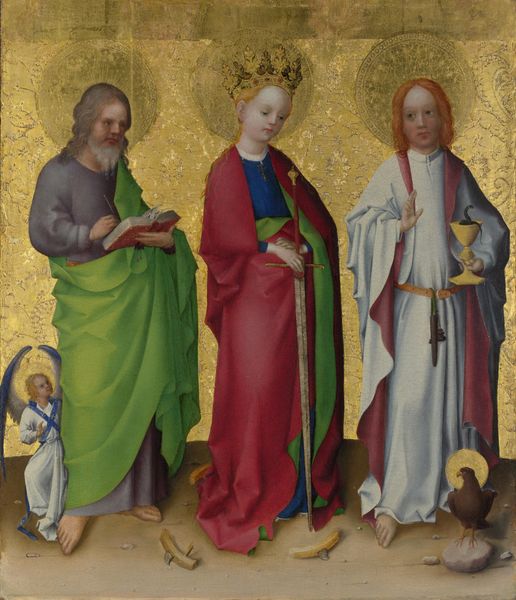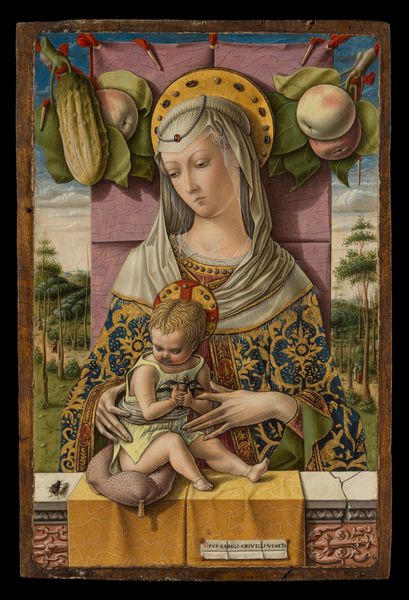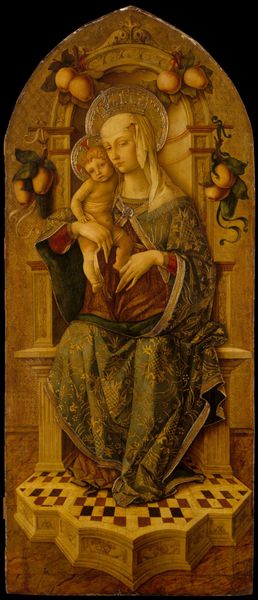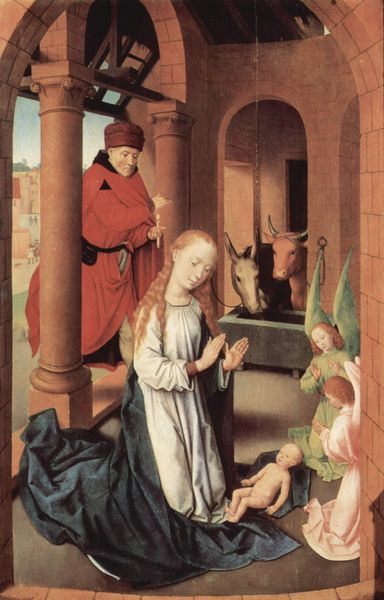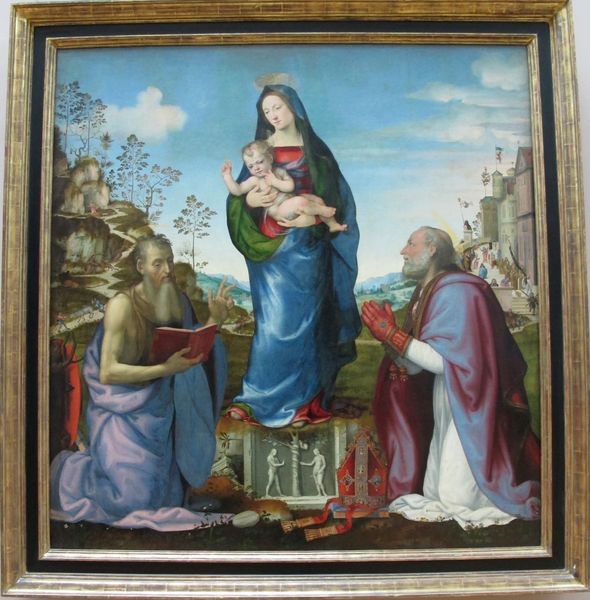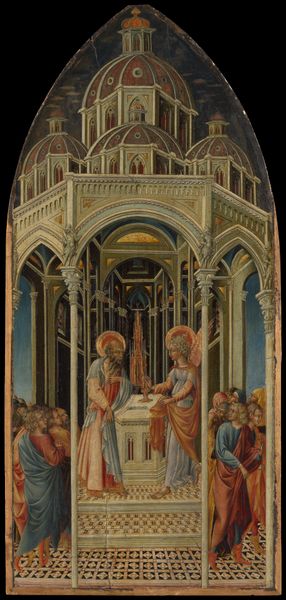
The Assumption of the Virgin with Saints Michael and Benedict 1493 - 1496
0:00
0:00
painting, oil-paint
#
portrait
#
high-renaissance
#
painting
#
oil-paint
#
figuration
#
oil painting
#
history-painting
#
italian-renaissance
#
portrait art
#
angel
Dimensions: 67 1/4 x 51 3/4 in. (170.8 x 131.4 cm)
Copyright: Public Domain
Curator: At first glance, there is such a compelling dissonance in the muted color palette contrasting the painting’s dramatic upward surge of figures. Editor: We’re looking at “The Assumption of the Virgin with Saints Michael and Benedict” by Luca Signorelli, painted between 1493 and 1496. Currently, it resides here at The Metropolitan Museum of Art. Curator: Observe how Signorelli organizes this ascension. He establishes a firm horizontal base with Saint Benedict and the vanquished demon. But the composition lifts our eyes continuously upwards via Michael’s spear to the Virgin, culminating in the angelic host above. It's carefully staged. Editor: Contextually, this piece represents a key moment in Italian Renaissance art where religious themes are blended with humanist ideals. Notice Saint Michael trampling the demon–an enduring motif symbolizing the Church's power over evil. It reflected, and reinforced, social structures of the time. Curator: Precisely, but I see something more. Look at the subtle interplay between textures. The rigid linearity in Benedict’s robes and Michael's armor against the softer modeling of the Virgin and the angels create a very intentional contrast. Editor: And the Virgin Mary herself—her quiet grace is fascinating when juxtaposed with Saint Michael's muscular energy. Signorelli, who worked at the height of the Italian Renaissance, uses the body as a battleground to express these spiritual concepts, which makes sense considering he devoted significant time to anatomical study. Curator: Ultimately, what intrigues me most is how Signorelli used a classical compositional style to present such a dynamically layered subject, even capturing such complex interactions through subtle juxtapositions of tone, line, and figuration. Editor: I’m left thinking about how artworks like this operated beyond their pure aesthetics. The piece projects a potent vision of divine power interwoven with earthly struggle—very reflective of its cultural moment.
Comments
No comments
Be the first to comment and join the conversation on the ultimate creative platform.
